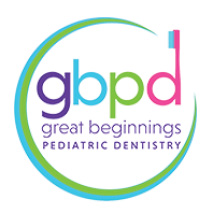Sponsored
Why Your Child’s Dentist Should Ask About Their Sleep Quality
By Dr. Rachel Rosen, DDS and Dr. Laura Adelman, DMD, and Danielle Richman (DDS)
We all understand the inherent value of a good night’s sleep! If you’re only discussing your child’s sleep habits with your pediatrician and not their pediatric dentist, though, you are missing out on valuable insights to help your child sleep and grow optimally. Airway-centric pediatric dentists, like those at Great Beginnings Pediatric Dentistry, have advanced training in recognizing sleep disordered breathing (SDB) in children. They can help your child breathe better, so they can sleep better and have a healthier smile!
Quality Sleep Begins with Quality Breathing
Your child’s ability to get restorative sleep depends in large part upon their ability to breathe through their nose with their lips sealed. Stated simply, nasal breathing is quality breathing! When a child has difficulty with nasal breathing, they may have what is known as sleep disordered breathing (SDB). The good news is that an airway dentist can help caregivers recognize SDB and offer many non-invasive solutions to correct it.
10 Signs Your Child May Be Suffering from SDB
If any of the following symptoms sound like your child, consider discussing them at your child’s next dental checkup, as they can be signs of SDB:
Snoring
Grinding teeth
Bedwetting beyond 3 years of age
Dark eye circles
Frequent ear infections/ history of ear tubes
Tossing and turning in sleep/ odd sleep positions
Enlarged tonsils/adenoids
Waking cranky or tired repeatedly
Waking frequently throughout night
Having chapped, cracked lips in the morning
Of course, the symptoms listed above can have other causes, but several that occur together regularly should prompt a conversation with your child’s dentist.
Physical Changes When SDB is Left Untreated
Many caregivers are mistakenly led to believe that their child will simply outgrow SDB or that snoring is “normal.” The airway dentists at Great Beginnings stress that when left untreated, SDB can leave lasting changes to your child’s face shape, as well as their tooth and jaw development, including:
More cavities, despite good oral hygiene
Elongated face shape
Crowded teeth
Underdeveloped bottom jaw
(recessed chin)
Behavioral Symptoms of Untreated SDB
SDB also often shows itself during daytime behaviors in children. For instance, children suffering from SDB often struggle with:
Picky eating
Anxiety
Poor school performance
Open-mouth breathing when relaxed
If you’re concerned your child may be suffering from SDB, contact an airway-focused pediatric dentist. Non-invasive treatments are available to help correct your child’s bite and tongue posture to set them on the path of optimal growth and development.

Dr. Laura Adelman, DMD,
Great Beginnings Pediatric Dentistry
9964 Vail Drive, Suite 1
Twinsburg, OH 44087
330-425-1885
gbpdsmiles.com
Opinions and claims expressed above are those of the author and do not necessarily reflect those of ScripType Publishing.

